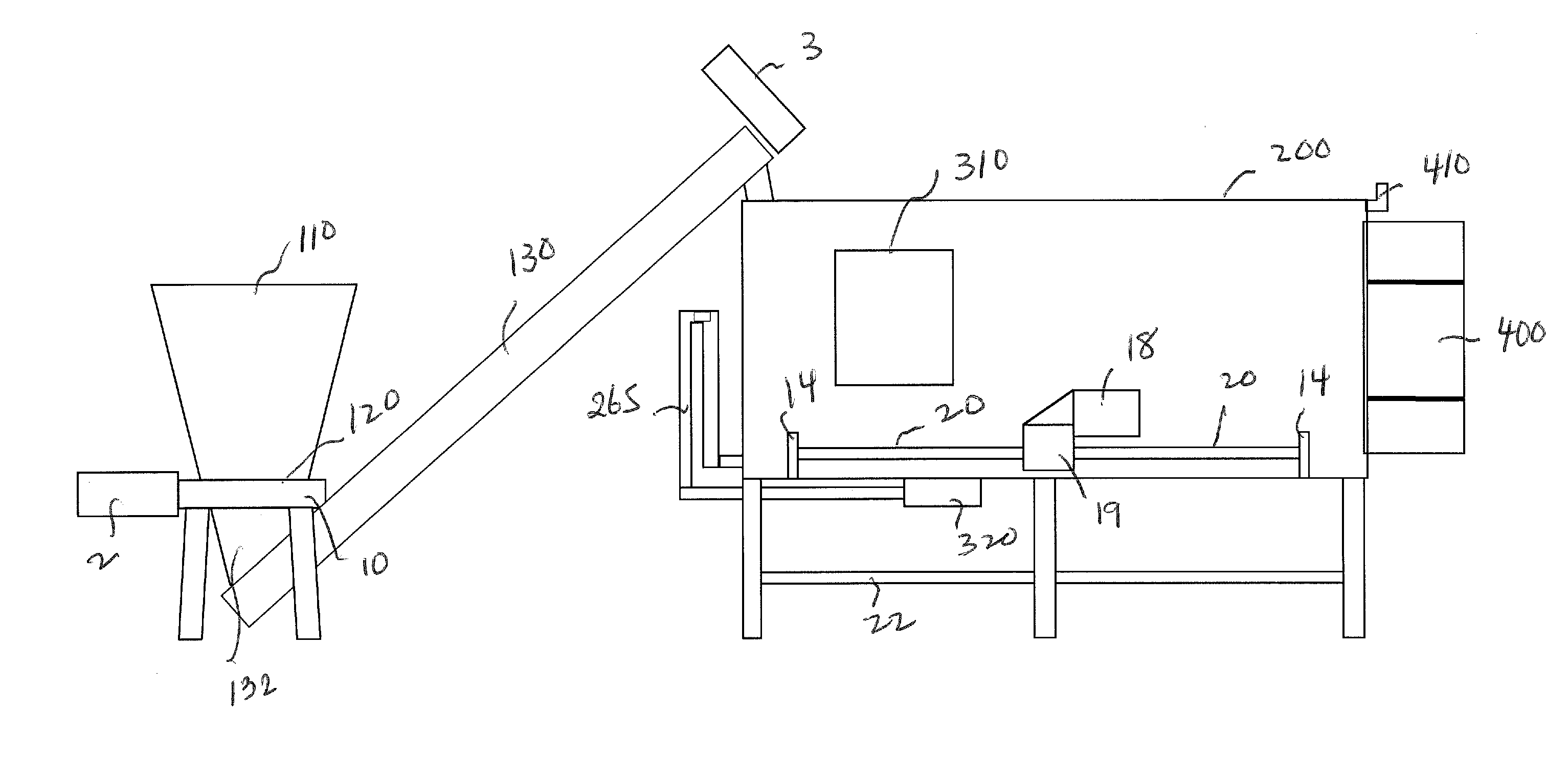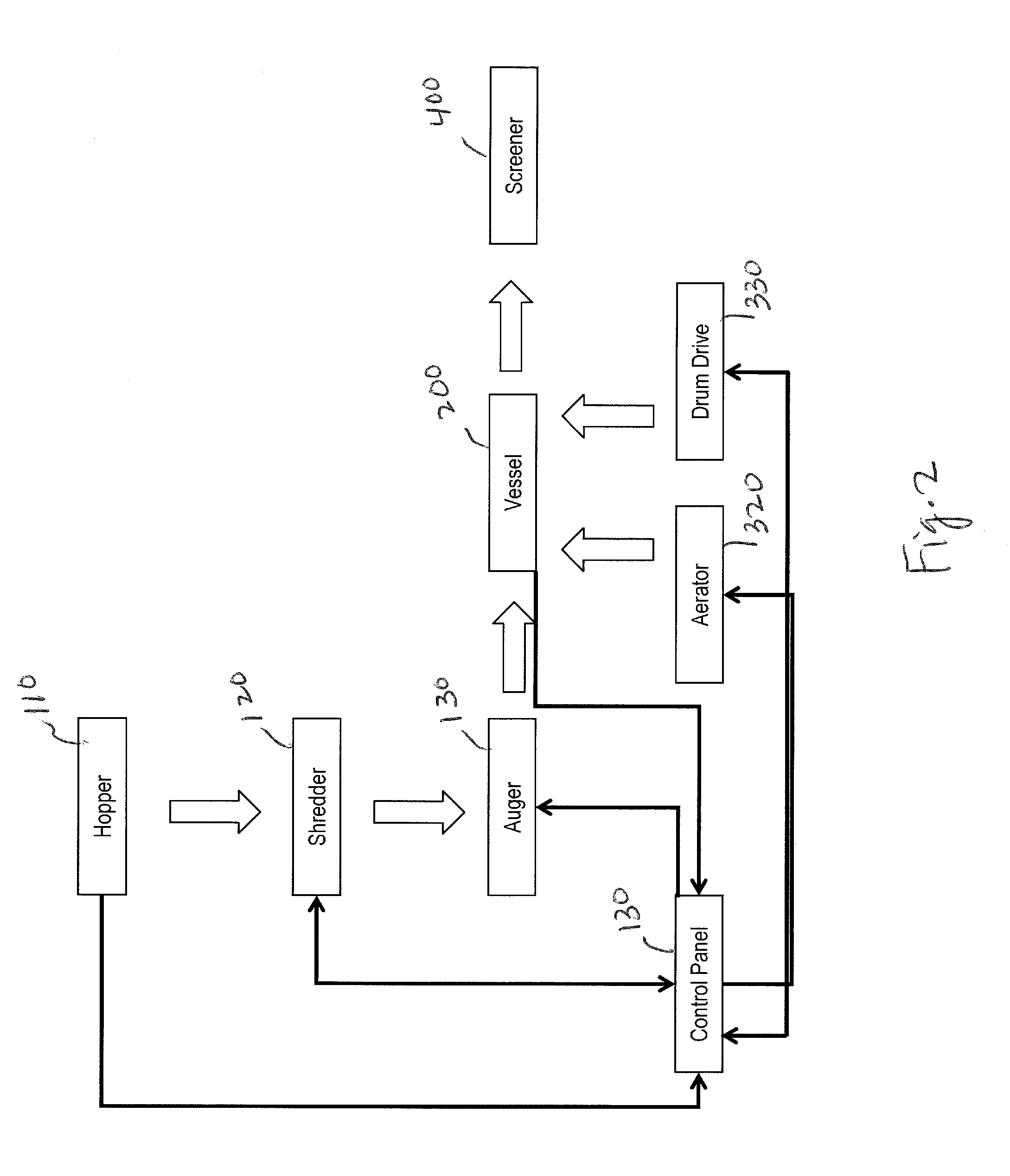Composting machine
a composting machine and composting technology, applied in biomass after-treatment, products, specific use bioreactors/fermenters, etc., can solve the problems of increasing transportation and disposal costs of all discards, increasing the cost of landfilling and incineration, and further complicated situation, so as to facilitate feeding
- Summary
- Abstract
- Description
- Claims
- Application Information
AI Technical Summary
Benefits of technology
Problems solved by technology
Method used
Image
Examples
Embodiment Construction
[0020]The invention is susceptible to many variations, including scaling for capacity, so long as process parameters and control logic are maintained. Accordingly, the drawings and following description of the preferred embodiment are to be regarded as illustrative in nature, and not as restrictive.
[0021]The invention provides for an aerobic in-vessel digestion system particularly suited to the accelerated digestion of food scraps. This invention provides several advantages over prior art. The composting system is capable of operating efficiently and with minimal preventative maintenance so that it may become more mainstream regarding solid waste management. The invention is designed to minimize potential malfunctions by reducing the number of moving parts. The aerobic in-vessel composting system also enables expedient repair or other remediation of the system should such action be necessary. Another advantage of the invention includes its compliance with all applicable OSHA regulat...
PUM
| Property | Measurement | Unit |
|---|---|---|
| temperature | aaaaa | aaaaa |
| volume | aaaaa | aaaaa |
| diameter | aaaaa | aaaaa |
Abstract
Description
Claims
Application Information
 Login to View More
Login to View More - R&D
- Intellectual Property
- Life Sciences
- Materials
- Tech Scout
- Unparalleled Data Quality
- Higher Quality Content
- 60% Fewer Hallucinations
Browse by: Latest US Patents, China's latest patents, Technical Efficacy Thesaurus, Application Domain, Technology Topic, Popular Technical Reports.
© 2025 PatSnap. All rights reserved.Legal|Privacy policy|Modern Slavery Act Transparency Statement|Sitemap|About US| Contact US: help@patsnap.com



